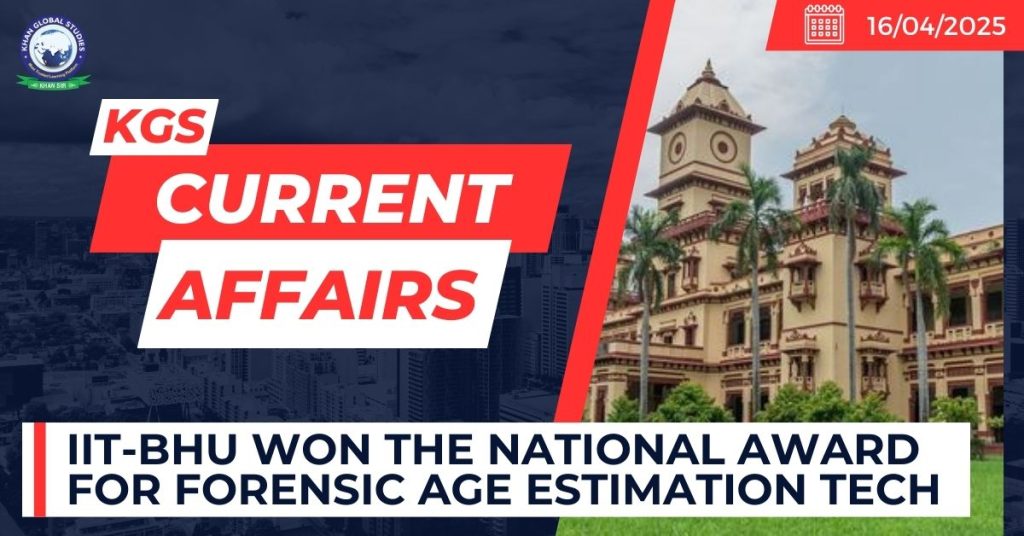Context:
The research team from the School of Biochemical Engineering, Indian Institute of Technology (BHU), Varanasi, won top honours at the Forensic Hackathon 2025.
More On News:
- The Forensic Hackathon was part of the All-India Forensic Science Summit, organised by the National Forensic Sciences University (NFSU), under the Union Ministry of Home Affairs.
- The award was presented by Union Home Minister at Vigyan Bhawan, New Delhi.
- The award-winning team was led by Prof. Sumit Kumar Singh from the School of Biochemical Engineering and included Santanu Singh (PhD Scholar) and Pranav Chopra (BTech Student).
- The team received a cash prize of Rs two lakh and a memento in recognition of their innovative work.
- The team developed a glycan-based forensic technology for accurate age estimation using biological fluids.
- The technology combines glycomic profiling with machine learning algorithms to estimate both chronological age and biological age.
- DNA-based forensic analysis, including epigenetic markers, works well at the population level but has biological variability and technological limitations.
DNA methylation-based models require pristine DNA and have decreased accuracy with degraded samples or diverse backgrounds, common in forensic settings.
- Biological age, specifically, offers important insights into an individual’s health, immune status, and physiological stress, which can provide crucial leads in criminal investigations.
- The molecular-level insight is highly valuable in various forensic scenarios. For example,
- It can help refine suspect profiles when no DNA match is available by estimating the age range of the individual who left the biological sample.
- It can also assist in identifying unknown victims in homicide cases or mass disasters by comparing estimated age with missing persons data.
- In cases involving multiple contributors at a crime scene, age-specific profiling can help distinguish between individuals.
- Additionally, this method holds potential for verifying claims of juvenility or age misrepresentation, especially in legal cases related to underage offenses or trafficking.
- Assessing a person’s biological age and condition at the time of an incident can reveal stress or health clues, aiding crime reconstruction.

